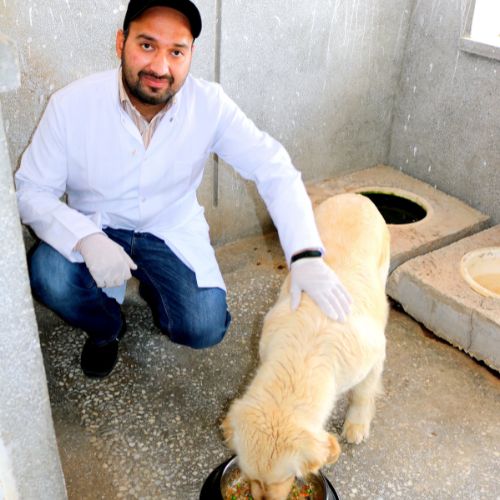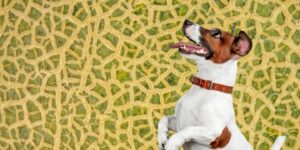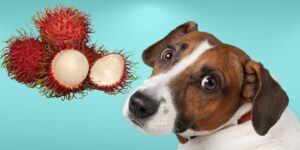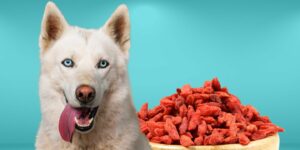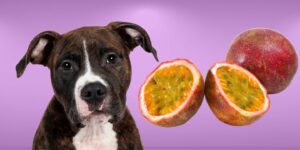Yes, dogs can eat pears because they are facultative carnivores. In fact, when used responsibly, pears can be a healthy snack for dogs. However, it's important to follow a few guidelines when feeding pears to your dog to ensure that they are safe and properly digested. Be careful while feeding pears to dogs, remove seeds because they can be toxic for dogs because they contain cyanides and amygdalin.
Understanding Dogs' Dietary Needs
Are Pears Safe for Dogs?
Pears are safe for dogs when given in moderation and prepared correctly. However, it is essential to understand that dogs are primarily carnivorous, relying on a high-protein diet for their energy and nutritional needs. Pears, like other fruits, should only be occasional treats, not meal replacements or significant sources of nutrition.
Nutritional Benefits of Pears for Dogs
Pears are a good source of vitamins and minerals, including vitamins C and K, copper, and potassium. These nutrients can help support a healthy immune system, strong bones, and healthy skin and coat in dogs. Pears are also low in fat but relatively high in sugar. Also, pears are high in dietary fiber, thus supporting healthy digestion.
Vitamin C and Its Benefits
Vitamin C is an antioxidant that helps protect your dog's body from harmful free radicals. It also supports a healthy immune system and aids in collagen synthesis, which is essential for maintaining healthy skin, joints, and connective tissues.
Vitamin K and Its Benefits
Vitamin K plays a crucial role in blood clotting and bone metabolism. It helps keep your dog's bones strong and prevents excessive bleeding during injuries.
Copper and Its Benefits
Copper is an essential trace mineral that helps with red blood cell production, iron metabolism, and antioxidant defense. Adequate copper levels contribute to a healthy coat and skin color in dogs.
Potassium and Its Benefits
Potassium is required for proper muscle function, nerve transmission, and fluid balance. It helps support your dog's heart health and overall cellular function.
Dietary Fiber and Its Benefits
Dietary fiber aids in healthy digestion by promoting regular bowel movements and preventing constipation. It can also contribute to weight management by supporting satiety and helping to prevent obesity.
Potential Risks of Feeding Pears to Dogs
Cyanide Poisoning from Pear Seeds
Pear seeds contain a small amount of amygdalin, which can release cyanide when metabolized. While the risk of cyanide poisoning from eating a few seeds is low, it is essential always to remove the seeds before feeding pears to your dog.
Choking Hazards
Large pieces of pear can pose a choking risk, especially for small dogs. Always cut pears into bite-sized pieces for your dog to chew and swallow safely.
Digestive Issues from Overconsumption
Feeding your dog too many pears can lead to digestive issues, such as diarrhea or an upset stomach. Limit pear treats to no more than 10% of your dog's daily caloric intake.
High Sugar Content Concerns
Pears are high in sugar, which can contribute to obesity and dental issues when consumed in excess. Be mindful of the amount and frequency of pear treats in your dog's diet.
How to Feed Pears to Dogs
Preparing Pears for Your Dog
- Make sure to remove the leaves, peel, and seeds from the pear before giving it to your dog. The leaves are inedible, the peel is hard to digest, and the seeds contain a toxin called amygdalin.
- Cut the pear into small, bite-sized pieces to make it easier for your dog to chew and swallow. Avoid feeding large pieces of pear to your dog, as this can cause choking.
- Offer the pear as a treat rather than a meal replacement. Pears should only make up a small portion of your dog's diet, as too much can cause digestive issues. A good rule of thumb is to limit (5-8%) pear treats to no more than 10% of your dog's daily caloric intake. Also, because of the high sugar content, it is not recommended to give them every day.
- Be sure to monitor your dog while they are eating the pear to ensure that they are able to safely chew and swallow it. If you notice any signs of choking or difficulty swallowing, immediately remove the pear and contact your veterinarian.
- Cooking pears before offering them to dogs can helps in proper digestion.
Feeding Frequency and Portion Control
It is crucial to control the portion size and frequency when feeding pears to your dog. A small portion (5-8%) of pear treats should not exceed more than 10% of your dog's daily caloric intake.
Monitoring Your Dog During Feeding
Observe your dog while they are eating the pear to ensure they are safely chewing and swallowing it. Look out for any signs of choking, difficulty swallowing, or allergic reactions.
Alternative Fruits for Dogs
If your dog enjoys pears, consider trying these other dog-safe fruits:
- Apples
- Bananas
- Blueberries
- Watermelon
Remember always to introduce new fruits gradually and in moderation to avoid digestive issues.
When to Consult a Veterinarian
It is essential to seek veterinary advice if you notice any of the following signs in your dog after feeding them pears:
- Signs of allergic reactions, such as hives, facial swelling, or difficulty breathing
- Digestive issues, including diarrhea or vomiting
- Choking or swallowing difficulties
Conclusion
In conclusion, pears can be a healthy and tasty treat for dogs when fed in moderation and according to the guidelines outlined above. Always be sure to monitor your dog while they are eating pears to ensure that they are able to safely chew and swallow them, and consult your veterinarian if you have any concerns. Remember, a balanced diet with occasional healthy treats, monitoring, and moderation is essential for your dog's overall wellbeing.


